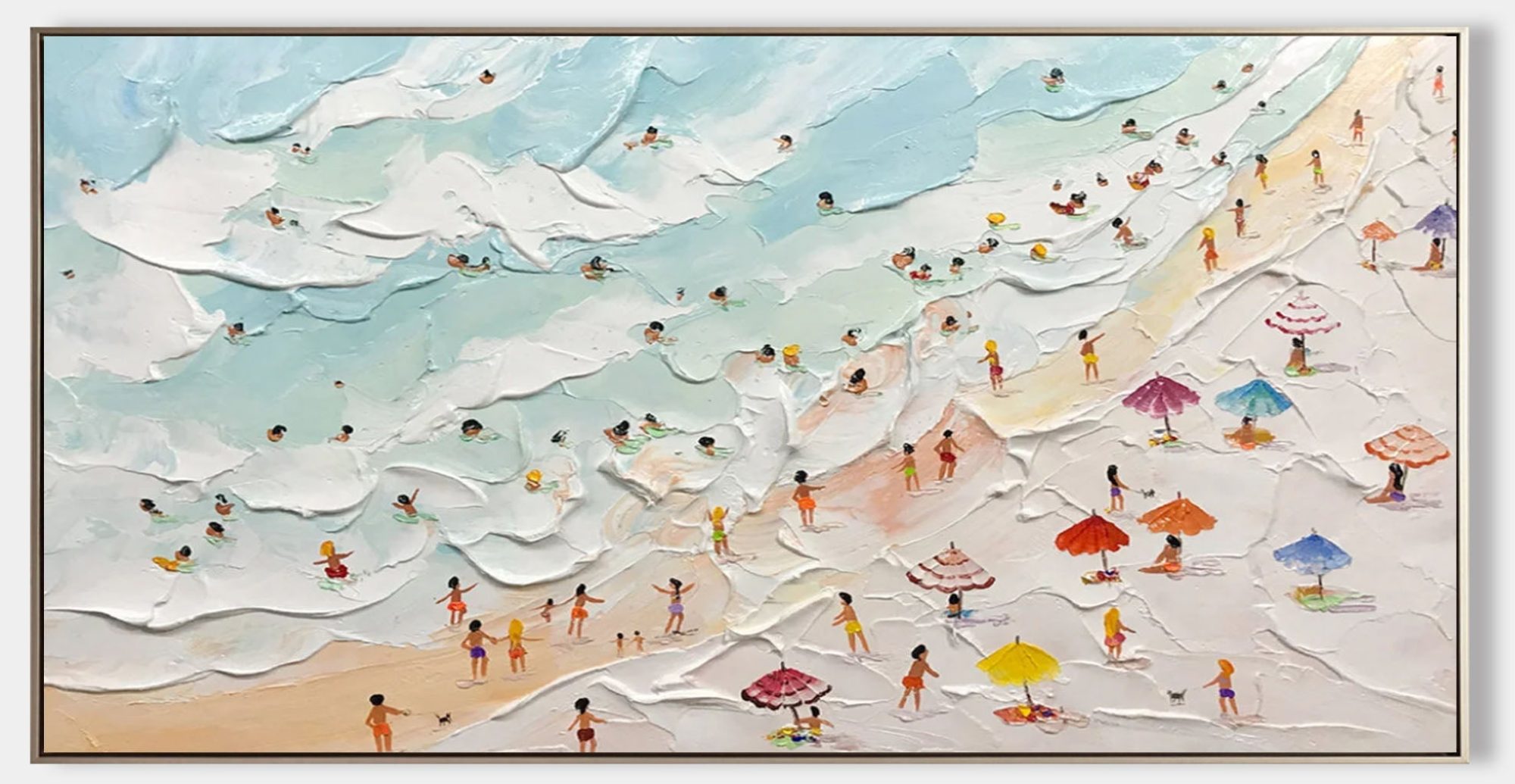In the quiet language of texture and tone, the oil painting “Blossoms” speaks of renewal, elegance, and emotional warmth. This abstract floral textured painting is more than a decorative element—it is a sensory gateway that connects us with the tranquil rhythm of nature and our inner self.
Thomas Merton once said, “Art enables us to find ourselves and lose ourselves at the same time.” With “Blossoms,” this duality unfolds through color, texture, and meaning.
🌼 A Bloom Beyond the Surface: The Beauty of “Blossoms”
“Blossoms” is not a traditional representation of flowers. It leans into the abstract form, using textured oil techniques that create a layered, almost sculptural effect. Each petal is formed not by line, but by volume—inviting us to see with our eyes and feel with our intuition.
The subtle contrast of ivory, cream, and muted taupe tones evokes a sense of purity and timelessness, while the raised textures offer a three-dimensional experience that shifts with lighting and perspective. This is art that moves—not physically, but emotionally.
🛋️ Where Does “Blossoms” Belong? Styling with Purpose
Unlike bold or overly vivid abstract art, “Blossoms” offers a calm presence. It is ideal for:
- Bohemian and Japandi-style living rooms, where organic textures and neutral palettes are key
- Modern entryways, giving guests a serene first impression
- Spa-inspired bathrooms or meditation spaces, where tranquility is the goal
- Minimalist offices, adding softness without distraction
- Boutique-style bedrooms, enhancing elegance through quiet visual storytelling
Its neutral tones make it adaptable, while the rich texture provides just enough artistic edge to feel refined and intentional.
💭 What Does This Painting Evoke Emotionally?
The abstract quality of “Blossoms” opens space for interpretation. For some, it may represent new beginnings; for others, it reflects stillness, surrender, and the quiet power of nature.
Art like this does not scream for attention. Instead, it gently invites reflection—a meditative pause in our fast-paced lives. It reminds us that there is strength in softness, and that beauty doesn’t need to shout to be seen.
🎨 Why Choose Textured Abstract Oil Paintings for Your Home?
Textured oil paintings, especially floral-inspired ones, are growing in popularity for a reason:
- They add dimension to flat walls, creating visual depth
- They reflect light beautifully, making the space feel more dynamic
- They engage touch and sight, offering a more immersive experience
- They allow personal interpretation, which deepens emotional connection
In contrast to flat art prints, textured paintings like “Blossoms” bring both soul and surface into the space, enriching your environment with something tangible yet poetic.
🌿 Art and Life: Where the Two Intertwine
Thomas Merton’s quote resonates deeply with the purpose of “Blossoms.” In its presence, you may feel yourself drifting into a memory, a mood, or simply a moment of stillness. Then, unexpectedly, you might discover something new—about yourself, your feelings, your need for beauty in everyday life.
This is what great art does. It isn’t just seen. It’s experienced. It connects your living space with your emotional landscape.
🌟 Final Thoughts: Let “Blossoms” Speak Softly in Your Space
Whether you’re curating a calming oasis or adding a gentle touch of elegance to your interiors, “Blossoms” delivers on both form and feeling. Through its natural textures and serene palette, it becomes more than décor—it becomes a part of your story.
Let this painting be the visual breath of your space—soft, sincere, and soul-stirring.
